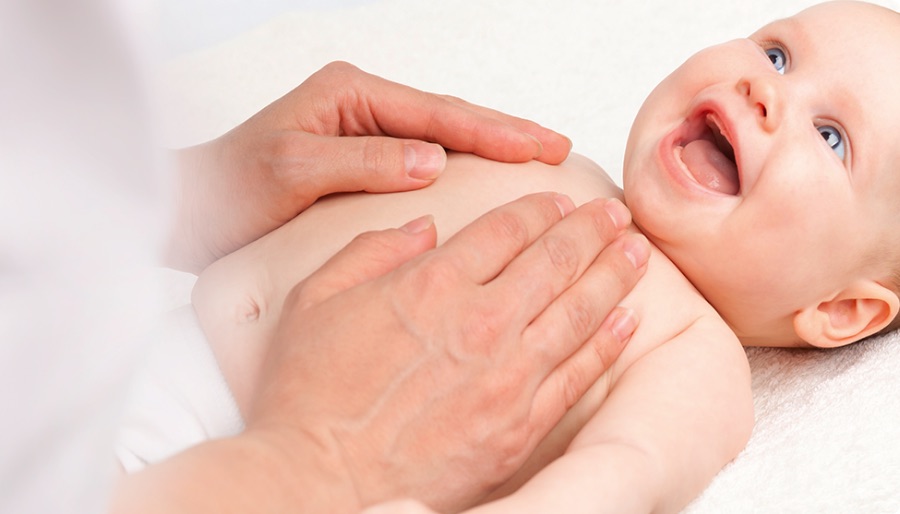LGG®鼠李糖乳酪杆菌菌株
- 一株全球充分验证的益生菌菌株

至今,已有超过250篇临床研究文献,对来自科汉森公司的LGG®鼠李糖乳酪杆菌菌株(以下使用商标LGG®)进行了阐述。这些临床研究表明,LGG®是可靠的可食用益生菌菌株,且与许多健康益处有关,研究较为深入的领域包括婴儿、儿童和成人的胃肠道、免疫系统和口腔健康。大量临床研究和科学文献表明,LGG®具有耐胆汁、耐胃酸和黏附性强的特性,并在抑制病原菌、增强免疫屏障功能和促进免疫相互作用方面具有支持效果18,19,20。
大量临床研究表明,LGG®鼠李糖乳酪杆菌菌株与包括胃肠道和免疫功能在内的诸多健康领域的改善有关。
对LGG®鼠李糖乳酪杆菌菌株的广泛临床研究
自1990年以来 ,LGG®鼠李糖乳酪杆菌菌株在全世界范围内被用作食品原料和膳食补充剂的成分,至今未出现不良事件报道。关于LGG®鼠李糖乳酪杆菌菌株的研究十分广泛,已有超过250篇临床研究文献对其进行了论述。LGG®鼠李糖乳酪杆菌菌株的研究涵盖了新生儿1、早产儿2、儿童3, 4, 5、孕妇6, 7、成年人8、老年人9等人群的不同健康领域。



大量临床研究表明,LGG®鼠李糖乳酪杆菌菌株与不同人群的多种健康益处相关。
在儿童健康领域,LGG®鼠李糖乳酪杆菌菌株最具临床证据的一些领域如下:
急性腹泻LGG®鼠李糖乳酪杆菌菌株与加快粪便硬度正常化10及缩短急性腹泻持续时间有关。5, 10, 11
抗生素相关性腹泻LGG®鼠李糖乳酪杆菌菌株与较低的抗生素相关性腹泻发生率相关。1, 3
院内感染LGG®鼠李糖乳酪杆菌菌株与较低的院内胃肠道感染及呼吸道感染发生率相关。4
呼吸道感染LGG®鼠李糖乳酪杆菌菌株与较低的呼吸道感染发生率、4, 12较少的持续三天以上的呼吸道感染次数4, 12以及显著缩短的呼吸道症状天数相关。12
口腔健康根据临床评估和微生物分析,13 LGG®鼠李糖乳酪杆菌菌株与降低龋齿风险、牙菌斑和唾液中变异链球菌浓度有关。14
在成人健康领域,LGG®鼠李糖乳酪杆菌菌株最具临床证据的一些领域如下:
旅行者腹泻LGG®鼠李糖乳酪杆菌与高风险地区旅行时的急性腹泻发病率降低有关。8
免疫系统健康服用LGG®鼠李糖乳酪杆菌后,观察到疫苗特异性抗体显著增加,表明其具有作为佐剂用于增强流感疫苗免疫原性的重要潜力。15

安全性
LGG®鼠李糖乳酪杆菌菌株已获得欧洲食品安全局(EFSA)授予的“安全资格认定”(QPS,Qualified Presumption of Safety) 16,被美国食品药品监督管理局 (FDA, Food And Drug Administration)列为“一般公认安全物质”(GRAS, Generally Recognized as Safe), 17并获得中国卫健委(原卫生部)的批准,至今未出现与明显不良事件有关的报道,是可靠的可食用益生菌菌株。
LGG®是科汉森有限公司的商标。®代表科汉森长期使用、具有较高知名度并已在中国获得注册的商标。
免责声明:本文章的目的是提供有关益生菌的信息,并不表示文章中提到的任何物质可用来诊断、减轻、治疗、治愈或预防任何疾病。如果您正面临具体的医疗问题,请务必咨询医生或专业人士。本文引用的有关文件、数据或研究结果仅供参考,不构成对任何人的直接建议或指导。所引用的文献、资料或研究仅为作者的观点,并不代表科汉森的立场。如需转载、节选、链接或以任何其他方式引用本文章内容,请确保符合中国法律法规,科汉森对引用本文章内容所产生的任何法律后果不负法律责任。
参考文献 打开 关闭
- Arvola T, et al. Prophylactic Lactobacillus GG reduces antibiotic-associated diarrhea in children with respiratory infections: a randomized study. Pediatrics. 1999;104(5):e64.(PubMed)
- Underwood MA, et al. A randomized placebo-controlled comparison of 2 prebiotic/probiotic combinations in preterm infants: impact on weight gain, intestinal microbiota, and fecal short-chain fatty acids. J Pediatr Gastroenterol Nutr. 2009;48(2):216-25. (PubMed)
- Vanderhoof JA, et al. Lactobacillus GG in the prevention of antibiotic-associated diarrhea in children. The Journal of Pediatrics. 1999;135(5):564-8.(PubMed)
- Hojsak I, et al. Lactobacillus GG in the prevention of nosocomial gastrointestinal and respiratory tract infections. Pediatrics. 2010;125(5):e1171-7.(PubMed)
- Isolauri E, et al. A human Lactobacillus strain (Lactobacillus casei sp strain GG) promotes recovery from acute diarrhea in children. Pediatrics. 1991;88(1):90-7.(PubMed)
- Gueimonde M, et al. Effect of maternal consumption of lactobacillus GG on transfer and establishment of fecal bifidobacterial microbiota in neonates. J Pediatr Gastroenterol Nutr. 2006;42(2):166-70.(PubMed)
- Lahtinen SJ, et al. Prenatal probiotic administration can influence Bifidobacterium microbiota development in infants at high risk of allergy. J Allergy Clin Immunol. 2009;123(2):499-501.(PubMed)
- Hilton E, et al. Efficacy of Lactobacillus GG as a Diarrheal Preventive in Travelers. J Travel Med. 1997;4(1):41-3.(PubMed)
- Hatakka K, et al. Probiotics reduce the prevalence of oral candida in the elderly--a randomized controlled trial. J Dent Res. 2007;86(2):125-30.(PubMed)
- Aggarwal S, et al. Lactobacillus GG for treatment of acute childhood diarrhoea: an open labelled, randomized controlled trial. Indian J Med Res. 2014;139(3):379-85.(PubMed)
- Sindhu KNC, et al. Immune response and intestinal permeability in children with acute gastroenteritis treated with Lactobacillus rhamnosus GG: a randomized, double-blind, placebo-controlled trial. Clinical infectious diseases : an official publication of the Infectious Diseases Society of America. 2014;58(8):1107-15.(PubMed)
- Hojsak I, et al. Lactobacillus GG in the prevention of gastrointestinal and respiratory tract infections in children who attend day care centers: a randomized, double-blind, placebo-controlled trial. Clin Nutr. 2010;29(3):312-6.(PubMed)
- Nase L, et al. Effect of long-term consumption of a probiotic bacterium, Lactobacillus rhamnosus GG, in milk on dental caries and caries risk in children. Caries Res. 2001;35(6):412-20.(PubMed)
- Glavina D, et al. Effect of LGG yoghurt on Streptococcus mutans and Lactobacillus spp. salivary counts in children. Coll Antropol. 2012;36(1):129-32.(PubMed)
- Davidson LE, et al. Lactobacillus GG as an immune adjuvant for live-attenuated influenza vaccine in healthy adults: a randomized double-blind placebo-controlled trial. Eur J Clin Nutr. 2011;65(4):501-7.(PubMed)
- EFSA Panel on Biological Hazards (BIOHAZ). Statement on the update of the list of QPS-recommended biological agents intentionally added to food or feed as notified to EFSA 3: Suitability of taxonomic units notified to EFSA until September 2015. EFSA Journal. 2015;13:4331
- Food and Drug Administration. GRAS Notice Inventory > Agency Response Letter. GRAS Notice No GRN 000049. 2002
- Chen et al., Lactobacillus rhamnosus GG treatment improves intestinal permeability and modulates microbiota dysbiosis in an experimental model of sepsis. INTERNATIONAL JOURNAL OF MOLECULAR MEDICINE 2019; 43: 1139-1148
- Liu et al. Porcine Small Intestinal Epithelial Cell Line (IPEC-J2) of Rotavirus Infection As a New Model for the Study of Innate Immune Responses to Rotaviruses and Probiotics. VIRAL IMMUNOLOGY 2010; Volume 23, Number 2
- Lebeer et al. Functional Analysis of Lactobacillus rhamnosus GG Pili in Relation to Adhesion and Immunomodulatory Interactions with Intestinal Epithelial Cells. Applied and Environmental Microbiology 2012, 78(1):185



